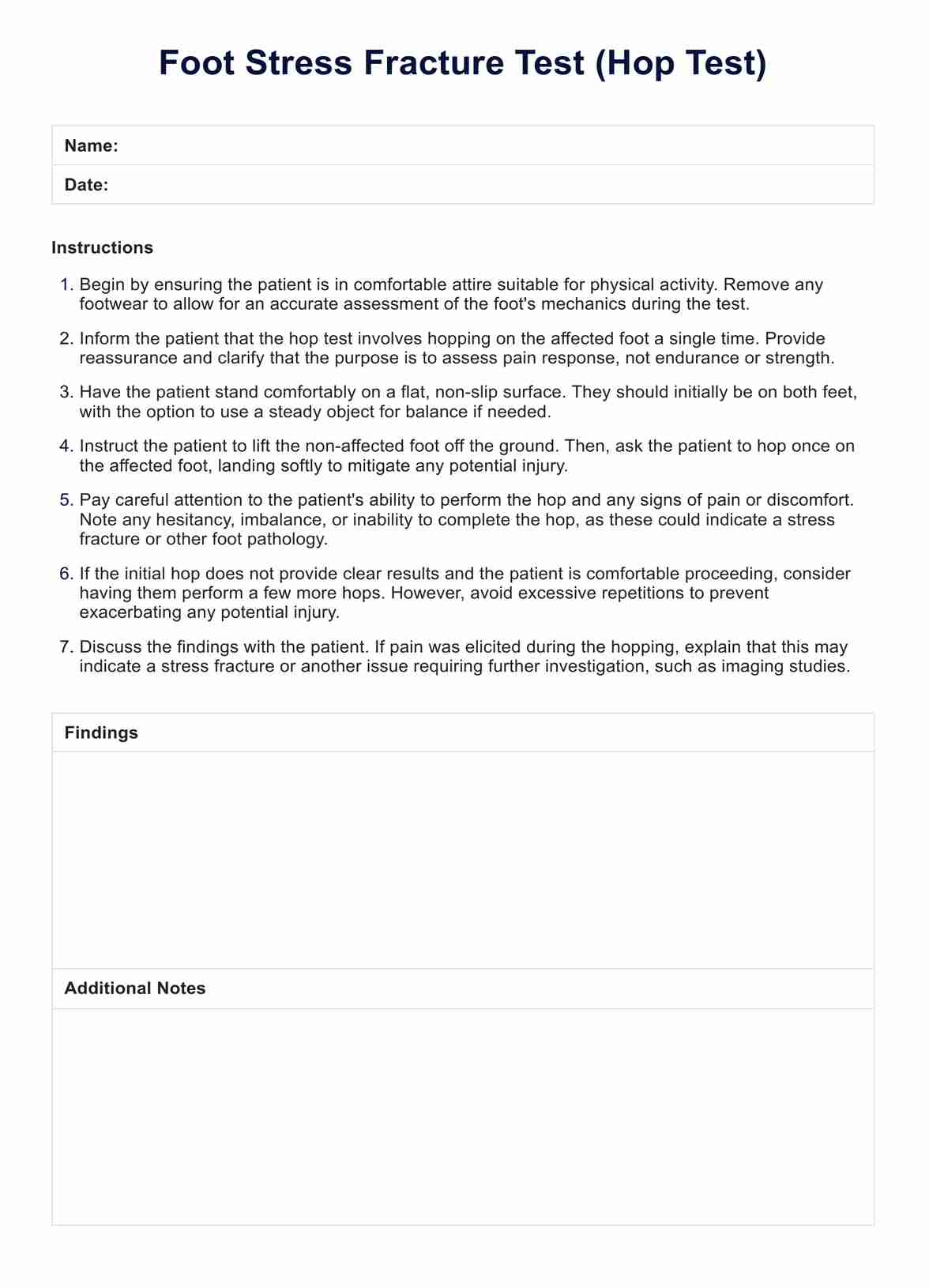Diagnosing a stress fracture involves a comprehensive evaluation that includes reviewing the patient's medical history, physical examination, and imaging tests. Tenderness and swelling in a specific area can indicate a stress fracture, but confirmation typically requires an X-ray, MRI, or CT scan.

Foot Stress Fracture Test
Learn how to perform the Foot Stress Fracture Test. Download a free PDF template to document your findings and notes.
Foot Stress Fracture Test Template
Commonly asked questions
Stress fractures develop when repeated stress and strain on a bone surpass its capacity to repair itself. Common contributing factors include sudden increases in physical activity, improper footwear, poor bone health, and conditions that weaken the bones, such as osteoporosis.
Stress reactions are precursors to stress fractures and represent the initial stage where the bone shows signs of stress without a full fracture. Recognizing and addressing stress reactions early can prevent the progression to a complete stress fracture.
EHR and practice management software
Get started for free
*No credit card required
Free
$0/usd
Unlimited clients
Telehealth
1GB of storage
Client portal text
Automated billing and online payments











